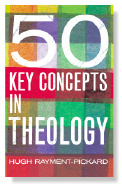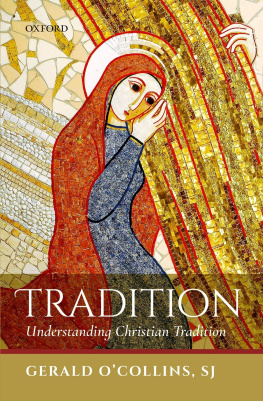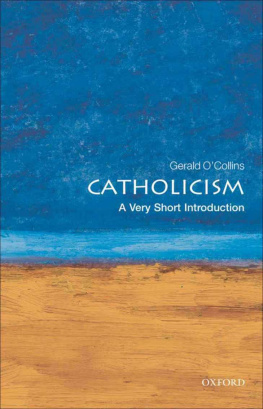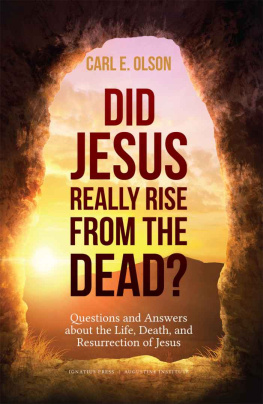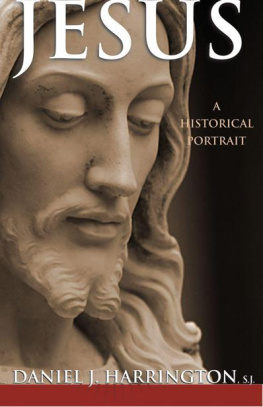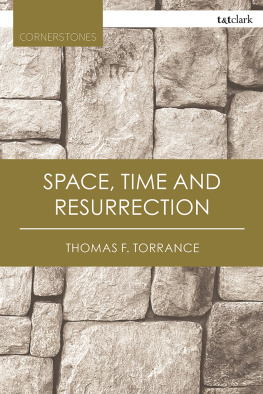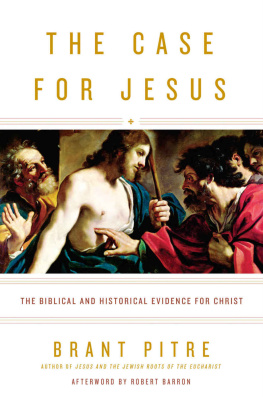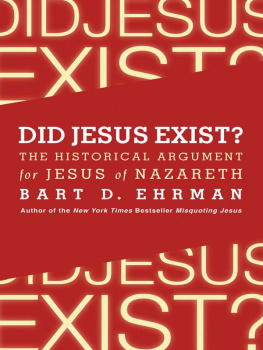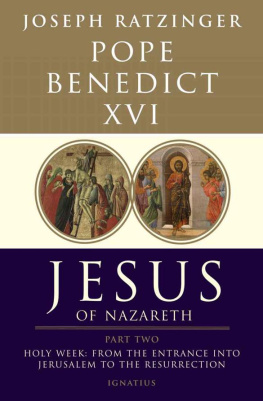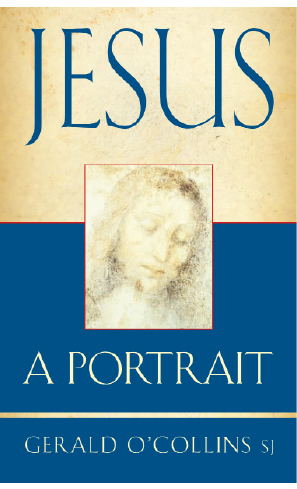First published in 2007 by
Darton, Longman and Todd Ltd
1 Spencer Court
140-142 Wandsworth High Street
London SW18 4JJ
2008 Gerald OCollins
The right of Gerald OCollins to be identified as the Author of this work has been asserted in accordance with the Copyright, Designs and Patents Act 1998.
A catalogue record for this book is available from the British Library.
Digital Edition converted and published by Andrews UK Ltd 2010
Preface
It is Jesus Christ alone we must present to the world. Outside of this, we have no reason to exist.
Pope John Paul I,
speaking on the last day of his life to Cardinal Bernardin Gantin
Some of what one sees on television about Jesus or reads in articles and books about him seems quietly evasive. At times producers and writers raise issues of merely historical interest, or allege that official cover-ups have hidden the real truth for many centuries. Or else they get caught up in secondary and even merely trivial matters. They will do anything but face the challenge in the ultimate religious drama created by the life, death, and resurrection of Jesus. Last Christmas, for instance, I sat through two hours of a programme that was all too ready to indulge eccentric theories about such things as the location of Bethlehem. Shifting the birthplace of Jesus from Bethlehem in Judea to an alternative Bethlehem in Galilee on frivolous evidence seemed to do nothing more than parallel the nineteenth-century attempt by General Charles George Gordon (183385) and others to relocate the site for the death and burial of Jesus (to Gordons Calvary and the Garden Tomb) away from the well authenticated Holy Sepulchre.
In the past, but seemingly much less today, some literary critics would spend their time on such secondary questions as the geography of Scotland or the latest visitors to the court of Elizabeth I, rather than face what Shakespeare presented in the tragic destiny of Macbeth and in the deliciously beautiful language of Twelfth Night. This kind of evasion lives on in the work of those who present Jesus or write about him but avoid at all costs a face-to-face encounter with the Jesus witnessed to and disclosed by Matthew, Mark, Luke, and John.
Four Portraits
The Gospels pack a lot into their portraits of Jesus, and do so in their own characteristic ways. Given the extraordinary nature of their experience of Jesus, it was almost inevitable that the first Christians would more than once tell that story in the form of Gospels which were to be recognised as the heart of the new Christian Scriptures. Add too the fact that the Gospels came from one eyewitness (John) and from three other evangelists who took much of their material from different eyewitnesses. Mark drew especially on Simon Peter; Luke (as well as using Marks Gospel and Q, a collection of the sayings of Jesus) relied on a number of eyewitnesses (Luke 1:2), who included women (Luke 8:1-3); Matthew drew on eyewitnesses, as well as on Mark and Q. The eyewitness testimony of the Twelve played a major role in the formation of all three of the Synoptic Gospels (Matthew, Mark and Luke).
The four portraits may be classified into more representational and historical (Matthew, Mark and Luke) or more impressionistic and concerned to develop characteristic effects produced by Jesus (John). The first three evangelists at points modify the traditions derived from eyewitness testimony to Jesus (e.g. the longer form of the Lords Prayer found in Matthew 6:9-13), occasionally retroject into the lifetime of Jesus traditions which come from the post-Easter period (e.g. Matthew 18:20), and are largely (but by no means entirely) responsible for the contexts in which they place the sayings and doings of Jesus. Yet their testimony provides reliable access to the history of what Jesus said, did, and suffered. At the same time, these evangelists have their spiritual and theological messages to announce; they are not to be reduced to mere compilers of traditions that they have drawn from eyewitnesses or otherwise inherited.
One of them, Luke, presses on to write a second volume, the Acts of the Apostles, in which he presents the continuing impact that the risen Christ and the Holy Spirit exercised in the mission and life of early Christianity. Yet the Christians ongoing experience of the exalted Christ and his Spirit continued to result from the past history of Jesus and did not dissolve it. From the opening chapters of his Gospel to the end of Acts, Luke makes it clear that the history of Jesus was decisively important for the Churchs life and preaching. In his life, death, and resurrection, Jesus proved the source of salvation for the world and the basis of Christian identity (Acts 4:10-12; 28:31).
Johns Gospel emerged from decades of prayerful, theological contemplation, which took Lukes work a stage further by merging two horizons: the memory of Jesus which the author recalled from a past that ended with Good Friday, Easter Sunday, and the appearances of the Risen One, and his continuing experience of the exalted Lord through to the end of the first century. In a lifelong process of understanding and interpretation, the author of the Fourth Gospel gained deeper insights into the meaning of the events in which he had participated, which had deeply formed him, and which he reflectively remembered. Like some wonderful modern paintings, his portrait of Jesus plays down some features in Jesus activity (e.g. the preaching of the kingdom, his parables, and the exorcisms) and develops other features (e.g. Jesus encounters with individuals, his questions, and his self-presentation). The masterpiece, which is the Fourth Gospel, brings out what was to some extent implicit in the life of Jesus and displays for the readers the deep truth about him.
To portray Jesus adequately is an impossible dream (John 20:30; 21:25). Unlike his near contemporary Marcus Tullius Cicero (10643 bc), he left no letters or other personal documents. The only time he was remembered as writing anything came when he wrote with his finger on the ground (John 8:6-8). This was in response to some scribes and Pharisees who had caught a woman in adultery and wanted Jesus to agree to her being stoned. According to several later manuscripts, Jesus wrote on the ground nothing about himself but the sins of each of them. Jesus did not bequeath to his followers any written instructions, and he lived in almost total obscurity, except for the brief period of his public ministry. According to the testimony provided by the Synoptic Gospels, that ministry could have lasted as little as a year or eighteen months. John implies a period of two or three years. Even for the brief span of that ministry, much of the chronological sequence of events (except for the baptism of Jesus at the start and his passion at the end) is, by and large, irretrievably lost. The fact that, explicitly and for the most part, Jesus did not proclaim himself but the kingdom of God, as well as the fact that he left behind no personal papers, makes access to his interior life difficult. In any case the Gospels rarely mention his motives or deal with his states of mind. These sources make it hard (but not impossible) to penetrate his inner life. But they do allow us to reconstruct much of the message, activity, claims and impact of Jesus in the final years of his life, as well as glimpsing every now and then his feelings and intentions. Jesus himself never wrote, but he continues to speak through the writings of the evangelists.
Three Stages
In drawing on the Gospels, I use the obvious and widely accepted scheme of three stages in the transmission of testimony to Jesus deeds and words: (1) the initial stage in his earthly life when his disciples and others spoke about him, repeated to others his teaching, and began interpreting his identity and mission; (2) the handing on by word of mouth or in writing (including the use of notebooks) of testimony about him after his death and resurrection; and (3) the authorial work of the four evangelists later in the first century. I agree that one can use such criteria as multiple (independent) witness in arguing that testimony to particular deeds and words derives substantially from the first stage: i.e. from the history of Jesus himself. When I draw on the Gospels, I will indicate whether I understand some passage to testify to what Jesus said or did at stage one, or whether the passage seems to illustrate rather what a particular evangelist at stage three (and/or the tradition behind him at stage two) understood about Jesus work and identity. I cannot stop to justify why I hold some deed or saying to have its historical origin in what Jesus said or did. But I will cite only examples for which such justification is available.

